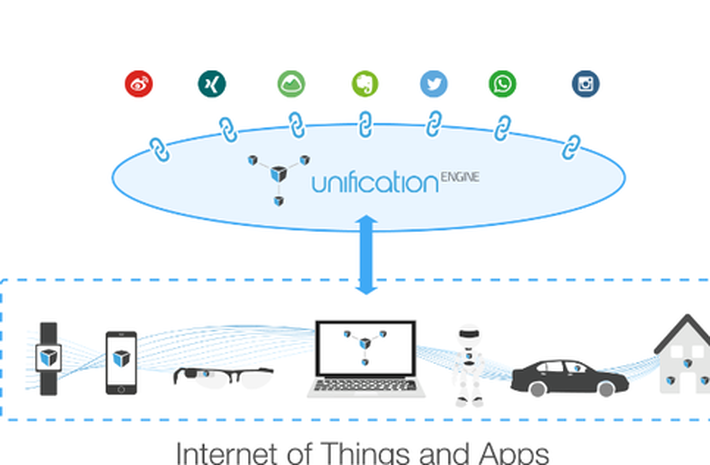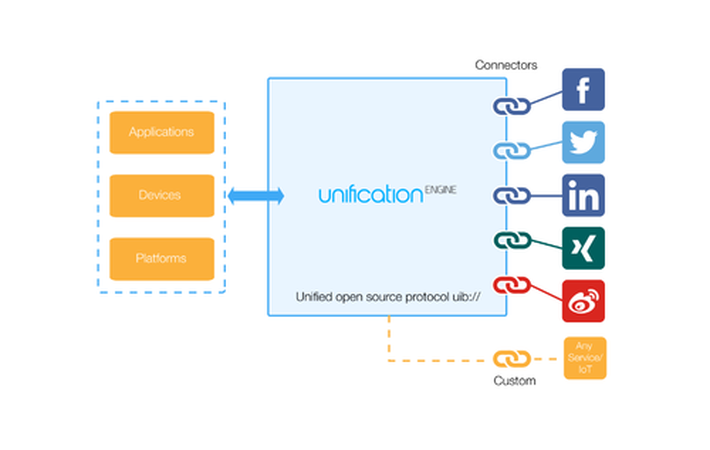
Published on 12/13/2016 | Use Cases
I recently came across an interesting framework discussing the importance of platform thinking. In an impressive effort, Sangeet Paul Choudary dedicates a whole book to this subject ("Platform Scale"), a weekly newsletter - and in the spirit of becoming a platform as well - its own website (http://platformed.info/), explaining the latest best practises and strategies on how companies can leverage platform thinking and why it is important in today's world.
What is the relevance of platforms today? Why would an already large enterprise make an effort to become a platform?
Given that startups like Uber or AirBnB and former ones like Facebook, Google and others managed to turn into large companies and create massive wealth in a really short time by leveraging platform strategy, the answer might be obvious. But of course, it is far more complex to figure out the opportunity at a time when other don't see it just yet and even more difficult to take the right steps of how to get there.
Considering that creating either completely new markets or quickly disrupting existing industries to an extent that single companies can create de facto monopolies, it would make good sense for Telecoms to study platform thinking deeply. I may even go that far to say that
the value of future companies and with it their ability to innovate, greatly depends on how fast they themselves can become a platform and how dedicated their focus is in getting there.
To me, some of the biggest platforms and very sizable opportunities that are coming up lay within the Internet of Things (IoT) industry.
But first let's take a look at what is IoT today and what it can be tomorrow. Today, we can read a lot about connected cities, smart things and that there will be millions of devices that will have to be connected with each other in the coming years. In fact, it is predicted that within the coming decade and inclusive of the sensors in cars, homes and smartphones, the average person will have direct or indirect access to 1,000(!) connected devices in their lives.
That is a very large number for any single person to manage, so without a doubt, such devices and sensors have to be very well managed, must be smart and ideally can talk to each other directly to a certain extent - maybe within laws that don't even exist today.
The trouble is, that today most devices aren't terribly smart yet and the first step for them in becoming so isn't in artificial intelligence or a better sensor technology but instead in a simple and straightforward way to get them securely and reliably connected with the rest of the communication and information grid.
A device is (and in my opinion remains) quite dumb if it cannot exchange its information with other devices or at the very least with its owner and/or user(s).
Providing such connectivity for the Internet of Things, thereby making devices more connected and ultimately smarter, so far is quite a challenge. One of the first questions a device maker will have to ask is "what all" to integrate with?
Take the example of a dishwasher - once the dishes are clean and dry, the machine could
- send a standard sms to its user,
- trigger an old fashioned email notification or
-drop a message into the Whatsapp group for the entire family to see.
Manufacturers of any such devices will have to consider whether they really want to
build all of those connectors (which could make sense, given such commonly used devices are exposed to a globally very broad user base - where all have different preferences for their highly individualized communication needs), or
build only some key ones (consciously excluding others based on geography, complexity or access - potentially losing an advantage or entire market to the competition).
Either way, the question comes down new investments that will have to be made in respective R&D departments. The decision of supporting many channels may result in a device manufacturer hiring more software developers (as the ongoing maintenance of such connectors isn't an easy task: every time an API of a messaging app or social network changes, adjustments will have to be made).
So for many companies with a strong hardware focus it may be cheaper, faster and just more convenient to integrate with existing providers for cloud based UCaaS (Unified Communications as a Service) solutions than building their own and continue to focus on their core competence of making better machines and smarter devices that delight their customers.

One of the grand underlying challenges to build such a UCaaS platform internally is that there exists no uniform protocol for accessing the communication grid from a device, app or platform perspective. For example: Gmail, Yahoo, and Microsoft Outlook arguably are different companies, brands and platforms. Yet at the very least they all use the same protocol (SMTP, POP3 or IMAP). On the contrary - messaging apps like Whatsapp, Viber, Line, WeChat or Telegram and social networks like Twitter, Facebook, LinkedIn, Weibo or Xing all use different APIs to access their platforms. What's worse - while some give only limited API access for developers to integrate with, others either give no access at all or don't even have APIs available internally.
This is exactly why I (disclosure, as CEO of Unified Inbox Pte. Ltd which has developed a "UnificationEngine" to access various communication channels in a single integration/API call) see a huge opportunity for creating a new platform technology, one that Telecom's can own, built upon and integrate with their core network services. I call it the "Internet of Communications" (IoC).
Securely connecting the Internet of Things to the Internet (IoT) of Communications (IoC) from an evolutionary perspective to me is one of the greatest challenges we have to face - and solve - before the next cycle of innovation around artificial intelligence (AI) comes into play, examples:
A virtual assistant which helps to connect and manage the IoT (as envisioned by Kimera Systems for instance - http://www.wired.com/2015/01/kimera-systems/), or
A digital assistant which works alongside your messages and within your conversations (as promoted by Facebook: https://www.facebook.com/Davemarcus/posts/10156070660595195?pnref=story)
A complete operating system based on AI (as seen in the movie "Her" a couple of years ago: http://www.imdb.com/title/tt1798709/)
For AI to be really useful for the human race on both a personal and a professional level, reliable and natural connectivity between things and the communication grid is an absolute must.
One other platform opportunity for Telecom's to me arises in the central provisioning and secure management of various IoT devices on behalf of their users. The question of who owns a device is not the same as who all are allowed to use it. A dishwasher may be used by many, but my phone usually is quite personal. Matching and confirming digital identities with physical devices can be harder with every new device that has to be configured. Using existing single-sign on mechanism of social networks and Software as a Service (SaaS) web application with protocols like oAuth and openID already in place, this is a great opportunity for the Telecom industry to play a major role in creating a provisioning platform for the IoT world.
Finally developing a unified protocol for devices to talk to each other could also turn into its own platform opportunity. Right now many devices - even if they are connected to the communication grid - still cannot talk to each other. There are many standards and initiatives suggested and actively worked on (i.e. Intel/Google in the US, Bosch in Germany/EU, Huawei in Asia), but it is not clear which one is going to be the globally most popular one.
Just as with the electrical plug, it probably will remain the end users problem to solve who has to suffer with converters and workarounds which can make life unnecessarily complicated and things less valuable if they cannot talk to each other. A telecom has a unique perspective to solve this and could act as a neutral translator service between the various standards and protocols suggested by different manufacturers and provide exceptional value to both the manufacturer as well as the end user.
To give this some perspective, picture a day in 2025. Your smart rubbish bin just talked to your robot and told it that it's full and the trash needs to be taken out. The robot in turn orders your drone to fly it to the dump.
Or say your fridge realizes there is no more milk. After a quick shopping list approval from you, it will order the related items online and a drone will fly in the desired goods just in time for dinner. Your robot then opens the door and puts the items in the fridge. Cooking time!
And as the robot is already working - why not let it empty the washing machine when it's finished and put the appropriate clothes into the dryer next?
Three examples, all with a very distinct similarity of autonomous device based interaction and communication, aka "talk". This is the third big platform opportunity I see where Telecom's could leave their mark, although I view this more of a protocol play than a platform play.
To summarize, there is huge value which can be generated by creating open platforms for:
securely provisioning IoT devices alongside existing user's identities
uniformly connecting devices with its owner(s) communication channels
safely enabling autonomous communication between connected things to accomplish a greater goal for their users.
In my opinion, none of these issues are solved unless it's simple to integrate IoT with IoC. In fact, to me there cannot be a real IoT without an IoC first as without an interconnected way between the two, the devices simply aren't smart enough to provide enough value to their users to fully capture the market opportunity that is projected for IoT.
I'm excited to see who will be the players, capturing the value of these upcoming platform opportunities, we certainly aim to be one of them.
This article was originally posted on LinkedIn.